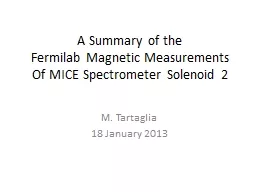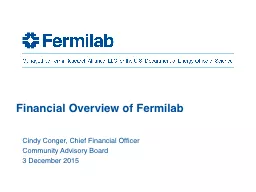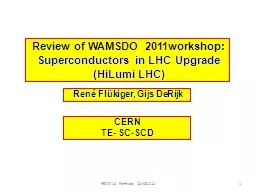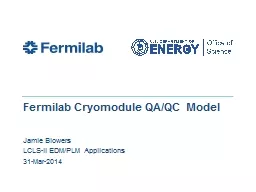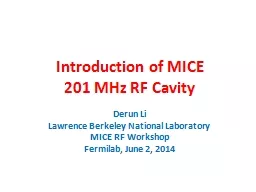PPT-A Summary of the Fermilab Magnetic Measurements
Author : ryotheasy | Published Date : 2020-06-17
Of MICE Spectrometer Solenoid 2 M Tartaglia 18 January 2013 The Spectrometer Solenoid M1 M2 E1 C E2 40 cm diameter warm bore 26m long cryostat SS2 under test SS1
Presentation Embed Code
Download Presentation
Download Presentation The PPT/PDF document "A Summary of the Fermilab Magnetic Measu..." is the property of its rightful owner. Permission is granted to download and print the materials on this website for personal, non-commercial use only, and to display it on your personal computer provided you do not modify the materials and that you retain all copyright notices contained in the materials. By downloading content from our website, you accept the terms of this agreement.
A Summary of the Fermilab Magnetic Measurements: Transcript
Download Rules Of Document
"A Summary of the Fermilab Magnetic Measurements"The content belongs to its owner. You may download and print it for personal use, without modification, and keep all copyright notices. By downloading, you agree to these terms.
Related Documents

